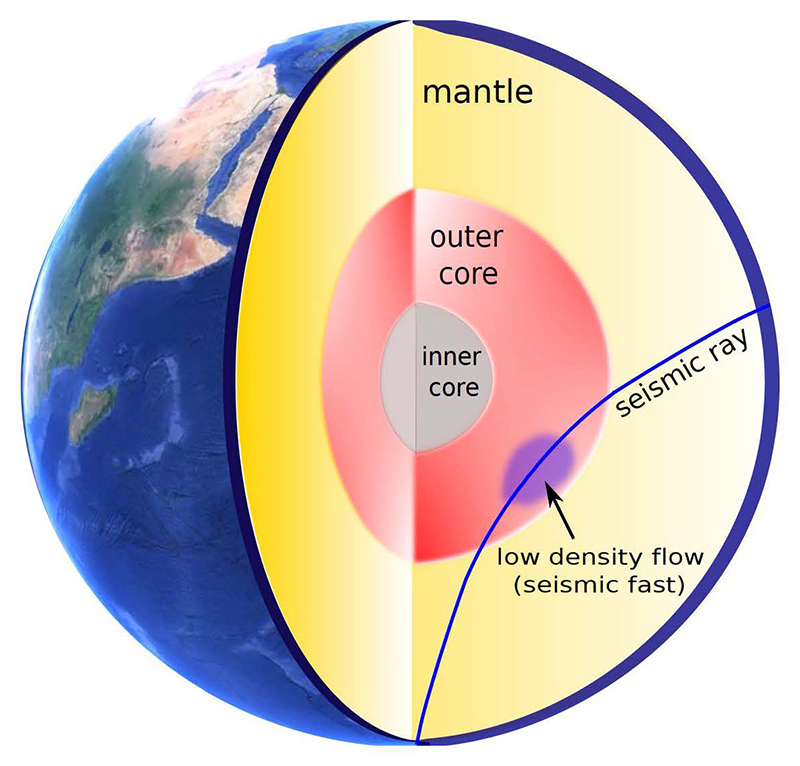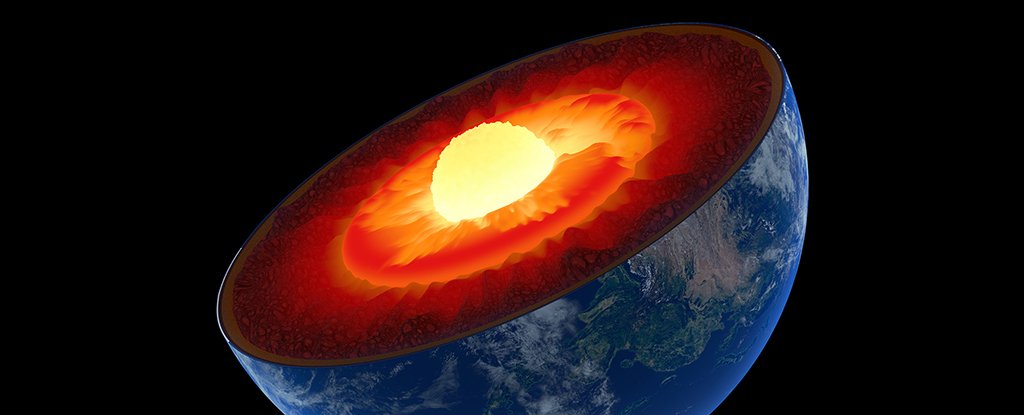Products You May Like
Most of our knowledge about what sits at the center of our planet comes from the study of seismic waves rolling out from earthquakes. Careful analysis of these waves can reveal the composition of rocks and metal below Earth’s surface.
A new study of seismic waves propagating from two different earthquakes – in similar locations but separated by a gap of 20 years – has revealed changes that are happening in Earth’s outer core, the swirling layer of liquid iron and nickel between the mantle (the rock underneath the surface) and the inner core (the deepest layer).
The outer core and the iron contained within it directly influence our planet’s magnetic field, which in turn provides protection from space and solar radiation that would otherwise make life on Earth impossible.
That makes understanding the outer core and its evolution over time vitally important. The data recorded from four seismic wave monitors across both earthquakes showed that waves from the later event traveled around one second faster when passing through the same region of the outer core.
“Something has changed along the path of that wave, so it can go faster now,” says geoscientist Ying Zhou from Virginia Tech. “The material that was there 20 years ago is no longer there.”
“This is new material, and it’s lighter. These light elements will move upward and change the density in the region where they’re located.”
The types of waves analyzed here are SKS waves: they pass through the mantle as shear waves (the S), then into the outer core as compressional waves (the K), then out the other side and back through the mantle again as more shear waves (the second S). The timing of that travel can be revealing.
As for the two earthquakes, both were near the Kermadec Islands in the South Pacific Ocean – the first in May 1997 and the second in September 2018, giving researchers a unique opportunity to see how Earth’s core may have changed over time.
 How seismic waves travel through the outer core. (Ying Zhou)
How seismic waves travel through the outer core. (Ying Zhou)
The convection occurring in the liquid iron of Earth’s outer core as it crystalizes onto the inner core creates flowing electrical currents, which is what controls the magnetic field around us. However, the relationship between the outer core and Earth’s magnetic field isn’t fully understood – a lot of it is based on hypothetical modeling.
“If you look at the north geomagnetic pole, it’s currently moving at a speed of about 50 kilometers [31 miles] per year,” says Zhou. “It’s moving away from Canada and toward Siberia. The magnetic field is not the same every day. It’s changing.”
“Since it’s changing, we also speculate that convection in the outer core is changing with time, but there’s no direct evidence. We’ve never seen it.”
This new study – and potentially future studies like it – could provide useful insights into exactly how the outer core and its convection are changing. While the changes noted here aren’t huge, the more we know, the better.
In this case, Zhou suggests that lighter elements such as hydrogen, carbon, and oxygen have been released in the outer core since 1997. It corresponds to a density reduction of around 2–3 percent and a convection flow speed of about 40 kilometers (25 miles) per hour, according to the published paper.
There are currently 152 Global Seismographic Network stations around the world, monitoring seismic waves in real-time. While we can’t control the location or timing of earthquakes, we can make sure that as much data as possible is logged about them.
“We’re able to see it now,” says Zhou. “If we’re able to see it from seismic waves, in the future, we could set up seismic stations and monitor that flow.”
The research has been published in Nature Communications Earth & Environment.
